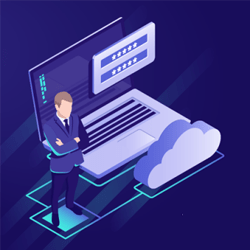Remote access can be one of the simplest ways for businesses to maximize efficiency. This technology can be an invaluable tool, providing wider connectivity in and out of a central work location. While some have already reaped the benefits of Remote Access, others have yet to discover what this technology can do for their organizations. In this guide, we'll show you how to enable remote access.
What Is Remote Access?
Remote access is a technology that allows users to connect to endpoint machines from remote locations. From a corporate point of view, remote access allows employees to stay connected to their office files, data, and information even outside of working hours. This means that any business demand or request can still be addressed effectively without needing to be in the central work location.
In the same vein, IT professionals can use remote access to serve clients across the globe. This means that they can provide off-site support to clients who live in faraway cities or countries. Managed service providers (MSPs) use remote access to effectively manage multiple remote devices and networks. With this, they can check for problems and issues much easier.
Enable Remote Access
Since more and more people are starting to use remote access, enabling one is easy to accomplish. Although there are tons of methods to do so, we've focused on three of the most common Solutions to Enable Remote Access. Here they are:
1. Remote Access Software
Remote access software (sometimes referred to as third-party software) is one of the go-to remote access solutions available. This type of program allows users to connect to remote endpoints using a remote connection safely. Typically, remote access software needs the help of an internet connection to allow users to remotely access another computer. It also needs to be installed on both local and remote devices.
Advantages of using remote access software:
- #1:
Remote access software allows users to access another computer outside a local network. This means that you don't need to first establish a VPN or expose your device to the internet before you can connect to a remote device. - #2:
Remote access software strongly encrypts remote sessions. It also requires all users to provide the right login credentials should they attempt to access a remote device. - #3:
Remote access software is easy to configure and use. All you need to do is install it on both the local and remote servers, and you can instantly connect to another computer remotely. - #4:
Remote access software is relatively cheaper compared to other alternative solutions. Some can even be purchased with no extra charges whatsoever.
2. Virtual Private Network
A virtual private network (VPN) is arguably the most popular remote access solution. This remote access solution has been around for years and is commonly the go-to solution most businesses invest in. Virtual private networks have a great reputation when it comes to security. The good thing about this solution is that it safely connects two private networks remotely, which in this case, are the company's private network and the employees' home networks.
However, creating VPN Access is extremely difficult to accomplish. You may need a dedicated IT team to establish this remote access solution effectively. Subsequently, maintaining VPNs can be extremely expensive. That's why most VPN users are IT professionals or big multinational companies.
3. Windows Remote Desktop Connection
Windows Remote Desktop Connection, or RDC, is a remote access solution created by Microsoft. This feature comes for free on all Windows-running computers by default. Windows RDC is mostly used by in-house IT teams who manage multiple corporate devices within the same network. This Microsoft feature is also the ideal remote access solution for ordinary device users, as it is easy to use and configure.
Windows RDC is disabled by default. To enable this feature, follow these steps:
- Step 1: Open Start in Windows.
- Step 2: Type in "remote access" in the search box.
- Step 3: Select "Allow remote access to your computer."
- Step 4: Click "Allow remote connections to this computer" on the "Remote" tab.
- Step 5: Click "OK."
Windows RDC, however, is designed to be used only on the same network. To use this feature outside of a local network may require you to expose your device to the internet.
Conclusion
Out of all the solutions provided above, Enable Remote Access Software triumphs over the others. Not only is it safe to use, but it also provides you with an easy and natural remote access experience. Consider investing in one now and see your business grow.
Awareness about How to Enable Remote Access is useful?
Share the wealth!

